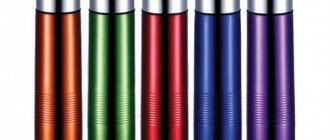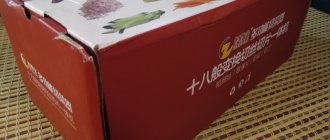Hello Dear blog readers! In our 21st century, changes are constantly taking place. They are especially noticeable in the technological aspect. Cheaper energy sources are being invented, and various devices are being distributed everywhere to make people’s lives easier. Today we will talk about such a thing as a solar battery - a device that is not breakthrough, but nevertheless, which is becoming more and more part of people’s lives every year. We will talk about what this device is, what advantages and disadvantages it has. We will also pay attention to how to assemble a solar battery with your own hands.
A little theory
The main material for the production of panels is silicon, with the addition of boron and phosphorus. They are located on different sides of each other. Under the influence of sunlight, free electrons are separated from phosphorus (n-type side) and begin to move towards the boron plate. The boron plate, having free elements, or peculiar holes (p-type side), accepts free electrons. Or a p–n junction appears. Now all that remains is to remove this movement of electrons from the plate in the form of electric current.
LED panel
Any LED is reversible: it not only emits light under voltage, but also vice versa - it generates electricity when exposed to light. The maximum EMF for super-bright elements is up to 1.65 V, but the current is very small - up to 20 μA. Green indicator LEDs with a lens with a diameter of 3 or 5 mm produce almost 1.6 V when illuminated. Red and orange LEDs with a 5 mm lens are quite inferior to them.
But it will not be possible to make a solar panel from them that can work as an effective charger due to the extremely low current.
The feasibility of a homemade solar panel
Understanding these physical properties of silicon will help you assemble your own solar panel. To begin work, you need to prepare.
In any case, a backup source of electricity is always in demand. Moreover, the cost of solar kilowatt is significantly lower than traditional electricity. Of course, many people want to purchase and install factory solar panels. The price for the entire set of equipment for a home power plant is daunting. Therefore, the question is very relevant: how to assemble a solar battery yourself?
A more competent approach is to calculate the amount of energy generated by one module:
W = k*Pw*E/1000
Where:
- E is the amount of solar insolation over a known period of time;
- k is the coefficient forming in summer - 0.5, in winter - 0.7;
- Pw is the power of one device.
Based on the planned total power consumption and calculated data, the total power consumption of electricity is calculated.
Now, if we divide the total by the expected performance of one photocell, we finally get the required number of modules.
System design and site selection
The solar system project includes calculations of the required size of the solar plate. As mentioned above, battery size is usually limited by expensive solar cells.
The solar battery must be installed at a certain angle, which would ensure maximum exposure of the silicon wafers to sunlight. The best option is batteries that can change the angle of inclination.
The installation location for solar plates can be very diverse: on the ground, on a pitched or flat roof of a house, on the roofs of utility rooms.
The only condition is that the battery must be placed on the sunny side of the site or house, not shaded by the high crown of trees. In this case, the optimal angle of inclination must be calculated using a formula or using a specialized calculator.
The angle of inclination will depend on the location of the house, time of year and climate. It is desirable that the battery has the ability to change the angle of inclination following seasonal changes in the height of the sun, because They work most effectively when the sun's rays fall strictly perpendicular to the surface.
For the European part of the CIS countries, the recommended stationary tilt angle is 50 - 60 º. If the design provides a device for changing the angle of inclination, then in winter it is better to place the batteries at 70 º to the horizon, in summer at an angle of 30 º
Calculations show that 1 square meter of solar system makes it possible to obtain 120 W. Therefore, through calculations it can be established that to provide the average family with electricity in the amount of 300 kW per month, a solar system of at least 20 square meters is required.
It will be problematic to immediately install such a solar system. But even installing a 5-meter battery will help save energy and make a modest contribution to the ecology of our planet. We also advise you to familiarize yourself with the principle of calculating the required number of solar panels.
A solar battery can be used as a backup energy source during frequent outages of the centralized power supply. For automatic switching it is necessary to provide an uninterruptible power supply system.
Such a system is convenient in that when using a traditional source of electricity, the solar system battery is simultaneously charged. The equipment servicing the solar battery is located inside the house, so it is necessary to provide a special room for it.
When placing batteries on the sloping roof of a house, do not forget about the angle of inclination of the panel; the ideal option is when the battery has a device for seasonally changing the angle of inclination
Required tools and materials
If you are not intimidated by the volume and complexity of the work ahead, you need to thoroughly prepare.
The main element is the plates themselves. The number of elements is selected based on the output parameters of the future panel. But the main condition is that their technical characteristics must be identical to each other. And if there is no experience in assembling such structures, it would be better to take several elements in reserve, taking into account defects in the first stages of work.
We continue to collect materials:
- chipboard;
- metal profile and corner (preferably made of aluminum);
- foam rubber 1.6–2.7 cm high;
- base for plates made of transparent material;
- a set of self-tapping screws;
- several tubes of silicone sealant;
- wiring;
- terminal clamps.
We do not indicate the volume of raw materials because it is directly dependent on the dimensions and number of parts from which the homemade solar battery will be assembled.
Now the tool and auxiliary materials:
- screwdriver;
- hacksaw for metal and hacksaw for wood;
- 40 watt electric soldering iron;
- electrical tester;
- flux and solder for soldering;
- industrial alcohol, for treating surfaces for soldering;
- cotton pads-tampons.
Materials for creating a solar plate
When starting to build a solar battery, you need to stock up on the following materials:
- silicate plates-photocells;
- chipboard sheets, aluminum corners and slats;
- hard foam rubber 1.5-2.5 cm thick;
- a transparent element that acts as a base for silicon wafers;
- screws, self-tapping screws;
- silicone sealant for exterior use;
- electrical wires, diodes, terminals.
The amount of materials required depends on the size of your battery, which is most often limited by the number of solar cells available. The tools you will need are: a screwdriver or a set of screwdrivers, a hacksaw for metal and wood, a soldering iron. To test the finished battery, you will need an ammeter tester.
Now let's look at the most important materials in more detail.
Silicon wafers or solar cells
Photocells for batteries come in three types:
- polycrystalline;
- monocrystalline;
- amorphous.
Polycrystalline wafers are characterized by low efficiency. The size of the beneficial effect is about 10 - 12%, but this figure does not decrease over time. The service life of polycrystals is 10 years.
A solar battery is assembled from modules, which in turn are made up of photoelectric converters. Batteries with rigid silicon solar cells are a kind of sandwich with successive layers mounted in an aluminum profile
Monocrystalline solar cells boast a higher efficiency - 13-25% and a long service life - over 25 years. However, over time, the efficiency of single crystals decreases.
Monocrystalline converters are produced by sawing artificially grown crystals, which explains the highest photoconductivity and productivity.
Film photoconverters are produced by depositing a thin layer of amorphous silicon on a polymer flexible surface
Flexible batteries with amorphous silicon are the latest. Their photoelectric converter is sprayed or fused onto a polymer base. The efficiency is around 5 - 6%, but film systems are extremely easy to install.
Film systems with amorphous photoconverters have appeared relatively recently. This is an extremely simple and extremely cheap type, but it loses its consumer qualities faster than its rivals.
It is not practical to use photocells of different sizes. In this case, the maximum current produced by the batteries will be limited by the current of the smallest element. This means that larger plates will not work at full capacity.
When purchasing solar cells, ask the seller about the delivery method; most sellers use the waxing method to prevent the destruction of fragile elements
Most often, for homemade batteries, mono- and polycrystalline photocells measuring 3x6 inches are used, which can be ordered in online stores such as E-bye.
The cost of photocells is quite high, but many stores sell so-called elements of group B. Products classified in this group are defective, but suitable for use, and their cost is 40-60% lower than that of standard plates.
Most online stores sell photovoltaic cells in sets of 36 or 72 photovoltaic conversion plates. To connect individual modules into a battery, buses will be required, and terminals will be needed to connect to the system.
Image gallery
Photo from
Polycrystalline photovoltaic plate
Front and back sides of the silicon wafer
Monocrystalline photovoltaic plate
Back side of a monocrystalline wafer
Frame and transparent element
The frame for the future panel can be made from wooden slats or aluminum corners.
The second option is more preferable for a number of reasons:
- Aluminum is a lightweight metal that does not place a significant load on the supporting structure on which the battery is planned to be installed.
- When anti-corrosion treatment is carried out, aluminum is not susceptible to rust.
- Does not absorb moisture from the environment and does not rot.
When choosing a transparent element, you need to pay attention to parameters such as the refractive index of sunlight and the ability to absorb infrared radiation.
The efficiency of photocells will directly depend on the first indicator: the lower the refractive index, the higher the efficiency of silicon wafers.
The minimum reflectance coefficient is for plexiglass or its cheaper option - plexiglass. The refractive index of polycarbonate is slightly lower.
The value of the second indicator determines whether the silicon solar cells themselves will heat up or not. The less the plates are exposed to heat, the longer they will last. IR radiation is best absorbed by special heat-absorbing plexiglass and glass with IR absorption. A little worse is ordinary glass.
If possible, the best option would be to use anti-reflective transparent glass as a transparent element.
In terms of the ratio of cost to light refraction and IR radiation absorption, plexiglass is the best option for the manufacture of solar panels
Panel selection advice
To get an output power of 145 W at a voltage of 18 V and not go too far out of your budget, it is better to take a closer look at class B kits.
Class B kits account for the main share of the entire solar battery market. For those who want to try to assemble panels with their own hands, it is better to take a closer look at these manufacturers. But there are currently a lot of such companies and, as a rule, they are not engaged in production, but in the resale of finished components. Or, in order to save money, they actively use manual assembly of panels, which naturally leads to a decrease in quality. Therefore, you need to be prepared for the fact that the declared characteristics may not coincide with the actual parameters. And you shouldn’t count on warranty obligations from such little-known companies either.
If you purchase 36 pieces of Chinese panels on the Alibaba website, it will cost 3,200 rubles. With the price of a ready-made kit with the same characteristics being 6,250 rubles, the benefit is quite tangible.
Consequently, the idea of making solar panels for your home with your own hands becomes even more relevant.
What's included
Power and category are two factors that mainly influence the entire composition of components.
The usual set is:
- Charging controller;
- Station (battery);
- Inverter device;
- Equipment to support connections.
When choosing, for example, the first category of a kit, the rated power of which is designed for two kilowatts, you need to focus on a minimum amount of about one hundred and twenty thousand rubles.
All funds spent must be compared with the effect of savings, which is calculated based on the cost of one kilowatt per hour generated by a centralized network and that which a solar battery can create.
Using the latest statistics provided by the market for such devices, we can determine that this ratio will be equal to eight point eight. Simply put, a solar station provides energy so many times cheaper than the general network when they are chosen in an equivalent equivalent.
One of the main criteria for choosing the direction in which the unit is used is considered to be a factor that ensures the smooth operation of all automatic components in heating systems, as well as monitoring security and alerting the fire service if necessary. This includes a home network of computers and a group of sensors for monitoring and taking measurements.
Which panels to buy
All products of this class are divided into:
- Monocrystalline (more expensive).
- Polycrystalline (amorphous).
The first ones have a more uniform structure, which is why the efficiency is much higher than that of amorphous ones. Actually, this is what causes the price increase.
It is very easy to distinguish these photocells from each other, both by color (dark blue monocrystal) and shape.
What to choose is up to the buyer to decide, but you should know that cheaper amorphous cells are made in small Chinese enterprises with deviations in the quality of materials, but at a lower cost.
To calculate the number of photocells, you need to focus on the projected output data of homemade panels.
According to the passport data, 0.12 kW/hour of electricity is removed from one square meter of panels. For domestic needs, it is enough to receive 280–320 kW per month from the device.
All elements must be the same size and denomination.
If you purchase a photocell with a protective wax coating, it must be removed after purchase.
Sequence of actions for preparing photocells:
- Unpack the panels.
- Treat with hot (90±5 degrees Celsius) water.
- After the wax has melted, separate all the elements from each other.
- Clean each panel of wax residue with hot water.
- Lay the treated panels on a soft cloth and dry.
Classification of photovoltaic modules
Solar power plants vary in intensity and operating principle of the built-in photovoltaic elements. Some modules lose significantly in power, however, they cost less. They differ in the method of manufacturing parts from silicon and are:
- thin-film, which are inexpensive and low-power modules. The key component in this battery is a film made of amorphous silicon. It occupies a large area of the battery, however, it generates energy in small quantities. When installed, it can be mounted both on the roof and on any surface;
- polymeric, made from hydrogen silica. The silane is applied to the backing insulating material of the battery. In addition, the polymer element can be applied to a soft substrate, so the amorphous station can be mounted on any uneven surface;
- monocrystalline, having their own reliable housing, protected from moisture and dust. Thanks to single crystals, they are distinguished by reliable energy generation over a long period of time. Stable modules, which are most often installed in Russia, Ukraine and Belarus;
- multicrystalline, made from solar cells with many multidirectional crystals. Less susceptible to high and low temperatures. However, these batteries require a large area to generate energy.
Solar modules are assembled only from photovoltaic cells of the same size. Otherwise, the maximum current power of small plates will limit the operation of large ones.
Frame making
A do-it-yourself solar battery begins its journey by making a frame from scrap materials.
The dimensions for it are calculated taking into account the parameters of the photocells themselves.
For the frame, you can use an aluminum corner with a shelf height of 70x90mm.
Why aluminum?
- Structure weight. The entire structure will eventually weigh a lot, but this is a light and fairly strong metal.
- Does not require anti-corrosion treatment.
To eliminate moisture ingress, all frame joints must be treated with silicone-based sealants.
Now that you have the metal frame, you can start making the solar panel housing.
Advantages
Solar panels have the following advantages:
- environmentally friendly;
- durability;
- silent operation;
- ease of manufacture and installation;
- independence of electricity supply from the distribution network;
- immobility of parts of the device;
- minor financial costs;
- light weight;
- work without mechanical converters.
Frame
Here the task is simpler - to make some kind of wooden box with low (2 cm) sides.
Before making a solar battery with your own hands, it would not hurt to prepare the materials. Here is a typical step-by-step instruction:
- The base of the body is made from a single piece of chipboard. The sides are screwed with self-tapping screws to the chipboard sheet.
- Drill holes in the wooden sides for ventilation.
- Ventilation holes are also made on the chipboard sheet with a drill, in increments of 10 cm across the entire area of the panel.
The base itself is ready. Now the solar panel assembly will continue with the installation of solar plates.
Calculation and design
To calculate a solar battery assembled at home, you will definitely need a list of all electrical appliances and equipment available in the house. You immediately need to find out the power consumption of each of them.
Power data is indicated in the labeling or in the technical data sheet of the device. Their values are quite approximate, so for a panel operating with an inverter you need to enter a correction, that is, the average energy consumption is multiplied by a correction factor. The total power thus obtained is further multiplied by 1.2, taking into account the losses during operation of the inverter. When starting up, powerful devices consume a current several times higher than the rated current. Due to this, the inverter must also handle double or triple the power for a short time.
Assembly of photocells
Before proceeding to this stage, it is necessary to study what the solar panel circuit looks like. Carefully arrange the elements on the base. It is important to maintain a distance between them of 3–5 mm. You can use crosses for installing tiles.
You need to prepare for soldering - bring out the contacts in order. Positive on one side, negative on the other.
The contacts on the panels may already be ready and fixed in place. If this is not the case, you will have to prepare and solder them yourself.
A homemade solar battery is made from crystalline elements. This is a rather fragile material, so you need to work with them with special care.
The manufacture of solar panels requires special treatment. To solder solar plates correctly without damaging them, you need to handle the parts carefully. Choose the right soldering iron with a permissible power of 24/36 W.
When all the plates are soldered, the circuit must be supplemented with self-discharge diodes (charge controller) and an acoustic cable at the output for connection.
Fix all panel elements with your own hands using sealant.
Now all the elements are selected and placed inside the frame.
Testing the battery before sealing
The work is nearing completion, but before further assembly of the panel with elements from China, it is necessary to check whether the assembled structure works at all?
There is a high probability of poor-quality soldering of contacts. As a matter of fact, it is better to do such a check after soldering each row of photocells - this will greatly simplify the detection of places of poor-quality connections.
Testing is carried out in an open area in sunny weather at noon, when the sun is not covered by clouds. A regular digital tester is suitable for measurements.
The prepared battery must be taken outside, pointed at the sun at the desired angle of inclination, which is calculated in advance. We switch the tester to current measurement mode and measure short circuit currents.
In theory, the panel current should be 0.5–1.0 A lower than the short circuit current. If the tester shows a current strength above 4.5 A, then the solar battery is assembled normally and is fully operational.
If the readings differ downward, you need to look for a weak soldered contact in the connection of the photocells.
Sealing
After the tests show the performance of all elements, the stage of sealing the photocells already placed in the frame begins. Epoxy glue is best suited for this purpose.
But its use will inevitably increase the cost of the entire “do-it-yourself panel” project. Although epoxy can be replaced with silicone sealant, not just any sealant, but one that is designed for use at subzero ambient temperatures.
Sealing can be done in different ways:
- fill in all the made elements immediately from edge to edge;
- The voids between the photocells and the edges of the frame are filled.
When working, you should consider some points:
- The surface must be perfectly flat. Otherwise, the elements will crawl to the side under their own weight.
- Hardening occurs faster at high ambient temperatures. All sealants have their own instructions.
If everything is taken into account and done correctly, the result will be a water-repellent and completely transparent surface. Let's assemble the panel further.
Cover fastening features:
- After waterproofing the assembled battery, it can be closed with a lid and fixed. But this can be done only after the adhesive composition has completely dried. If you hurry and fasten the lid, the glue will evaporate and cloudy stripes will remain on the plexiglass.
- Using the cable that now comes out of the panel, make a two-pin connector for the controller.
- Battery performance is checked again.
Now the panel, assembled with your own hands at home, is ready for installation and its connection to the home solar system.
Installation of a finished system
- For full operation of solar panels, you need to additionally purchase a current inverter from 12 V to 200 V to convert direct current from the panel to alternating current.
- In order not to overload the system and to save electricity, you need at least two gel or AGM batteries.
- The system will not be complete without a controller that will control the operation of storage batteries.
The installation location is chosen before making the solar panel. It also plays a big role.
Solar panels can be placed on the ground, on walls or on the roof. It's a matter of taste and free space. But it is important that the panel receives maximum sunlight. Therefore, any falling shadow on the structure is extremely undesirable.
You can often see a system of similar Chinese panels on the roofs of houses. But in any case, you need to make sure that the roof itself is reliable and whether it can withstand the additional weight from solar cells. And this is an essential condition. Because in addition to the installation of the solar panels themselves, they will add the weight of the brackets and the rotating system, which cannot be avoided - the installation angle is strictly regulated. It should be 30–40 degrees to the roof.
If the panels are made of thin-film materials, you need to protect them from additional wind loads and pressure from accumulated snow. It needs reliable wind protection.
A good solution for a summer house is ground installation on a metal frame made of a reliable profile with a cross-section of 25x25 mm or larger. Wind breakers and snow protection must be installed in front of the frame structure.
What affects the efficiency of solar panels?
Now it is clear that it is quite possible to assemble a solar battery with your own hands. But we must understand that the effectiveness of such an energy source depends on many factors. Moreover, this applies to devices of all types - both factory and homemade:
- Photocells lose their performance as their temperature rises.
- If part of the panel falls into the shade and the sun illuminates only part of the photocells, as a result there is a general drop in the output voltage.
- If the panels are equipped with additional lenses to concentrate sunlight, then their effectiveness drops to zero in cloudy or cloudy weather. There is no sun and there is simply nothing to focus on.
- The highest possible efficiency is possible with proper selection of load resistance. For this purpose, it is better to connect the photo panels yourself not directly to energy consumers or batteries, but through a special controller. With its help, the battery will work as efficiently as possible.
Advantages and disadvantages of this type of energy
The advantages include the following:
- Our Sun is an environmentally friendly source of energy that does not contribute to environmental pollution. Solar panels do not emit various harmful waste into the environment.
- Solar energy is inexhaustible (of course, while the Sun is alive, but this is still billions of years in the future). From this it follows that solar energy would definitely be enough for your entire life.
- Once you have installed solar panels correctly, you will not need to maintain them frequently in the future. All you need is to carry out a preventive examination once or twice a year.
- Impressive service life of solar panels. This period starts from 25 years. It is also worth noting that even after this time they will not lose their performance characteristics.
- Installation of solar panels may be subsidized by the government. For example, this is actively happening in Australia, France, and Israel. In France, 60% of the cost of solar panels is returned.
The disadvantages include the following:
- So far, solar panels are not competitive, for example, if you need to generate large amounts of electricity. This is more successful in the oil and nuclear industries.
- Electricity production directly depends on weather conditions. Naturally, when it’s sunny outside, your solar panels will operate at 100% power. When it’s a cloudy day, this figure will drop significantly.
- To produce a large amount of energy, solar panels require a large area.
As you can see, this energy source still has more advantages than disadvantages, and the disadvantages are not as terrible as it would seem.
Solar battery made from old transistors
Those who repair radio equipment accumulate their strategic stock of radio parts over time. Among them may be transistors or diodes in a metal case. They are no longer suitable for repairing modern devices due to their large dimensions, but assembling a small photopanel from old transistors is quite possible.
It is best to find CT or P type transistors from available materials:
To get to the photocell, you need to carefully cut off its upper part. Beneath it is a silicon semiconductor element - a photocell. You can cut off the lid if you carefully hold the part in a vice with a hacksaw.
The plate is visible underneath. It is this that will be the main element in the future scheme.
There are three output contacts:
- base;
- emitter;
- collector.
We need a collector. It is he who has a good potential difference.
Assemble the initial chain according to the diagram:
All elements must be assembled on a flat surface made of dielectric material. Based on the parameters of the future photopanel, a sequential chain of parts is assembled. And then a parallel group of such chains is recruited.
If one transistor is capable of delivering 0.35 V and a current with a short circuit of 0.25 μA, then you can select the estimated number of chains from radio components based on these characteristics.
Do not forget that the assembled battery of LEDs will need cooling. Therefore, it is not recommended to place parts tightly and close to each other. This will make natural ventilation work better.
Experienced craftsmen know that this design is inconvenient due to its large dimensions. A DIY solar battery made from diodes is much more practical.
In any case, it makes sense to try to solder an alternative energy source for two reasons:
- At a minimum, old radio components will be added.
- It can power a digital clock or even a small radio.
Diode battery
A solar battery made from D223B diodes can really become a source of electric current. These diodes have the highest voltage and are housed in a glass case coated with paint. The output voltage of the finished product can be determined from the calculation that one diode in the sun generates 350 mV.
- Place the required number of radio components in a container and fill it with acetone or another solvent and leave for several hours.
- Then, you need to take a plate of the required size from a non-metallic material and make markings for soldering the components of the power source.
- Once soaked, the paint can be easily scraped off.
- Armed with a multimeter, in the sun or under a light bulb we determine the positive contact and bend it. The diodes are soldered vertically, since in this position the crystal best generates electricity from the sun's energy. Therefore, at the output we get the maximum voltage that the solar battery will generate.
Diode wiring
Briefly about the device and operation
Solar energy can be converted into heat, when the energy carrier is a coolant fluid, or into electricity, collected in batteries. The battery is a generator operating on the principle of the photoelectric effect.
The conversion of solar energy into electricity occurs after the sun's rays hit the photocell plates, which are the main part of the battery.
In this case, light quanta “release” their electrons from extreme orbits. These free electrons produce an electric current that passes through the controller and accumulates in the battery, and from there it goes to energy consumers.
Image gallery
Photo from
Assembling a solar cell from silicon wafers
Formation of a positive current-carrying path
Creating negative current lines from the rear side
Connecting the conductor and blocking diode
Silicon elements act as photocell plates. A silicon wafer is coated on one side with a thin layer of phosphorus or boron, a passive chemical element.
In this place, under the influence of sunlight, a large number of electrons are released, which are retained by the phosphorus film and do not fly apart.
On the surface of the plate there are metal “tracks” on which free electrons line up, forming an ordered movement, i.e. electricity.
The more such silicon wafers-photocells, the more electric current can be obtained. Read more about the principle of operation of a solar battery below.
The top layer of photocell plates is covered with a layer that prevents reflection of sunlight from the plates, increasing their efficiency
Foil battery
In addition to the two methods described above, the power source can be assembled from foil. A homemade solar battery, made according to the step-by-step instructions described below, will be able to provide electricity, although of very low power:
- For homemade products you will need copper foil with an area of 45 square meters. cm. The cut piece is treated in a soap solution to remove fat from the surface. It is also advisable to wash your hands so as not to leave grease stains.
- Using sandpaper, it is necessary to remove the protective oxide film and any other type of corrosion from the cutting plane.
- A sheet of foil is placed on the burner of an electric stove with a power of at least 1.1 kW and heated until red-orange spots form. With further heating, the resulting oxides are converted to copper oxide. This is evidenced by the black color of the surface of the piece.
- Once the oxide has formed, heating must be continued for 30 minutes to form an oxide film of sufficient thickness.
- The roasting stops and the sheet cools down along with the stove. When cooling slowly, the copper and oxide cool at different rates, making the latter easier to peel off.
- Remaining oxide is removed under running water. In this case, you should not bend the sheet and mechanically tear off small pieces so as not to damage the thin layer of oxide.
- A second sheet is cut to the size of the first.
- Place two pieces of foil in a 2-5 liter plastic bottle with the neck cut off. Secure them with alligator clips. They must be positioned so that they do not connect.
- A negative terminal is connected to the processed piece, and a positive terminal is connected to the second piece.
- A saline solution is poured into the jar. Its level should be 2.5 cm below the top edge of the electrodes. To prepare the mixture, 2–4 tablespoons of salt (depending on the volume of the bottle) are dissolved in a small amount of water.
Foil battery
All solar panels are not suitable for providing a cottage or private home with electricity due to their low power. But they can serve as a power source for radios or charging small electrical appliances.
Disadvantages of solar panels
Now that DIY panels have become even more affordable, not all homeowners are eager to acquire such an alternative source of electricity. And there are reasons for this:
- a powerful and efficient system requires a large area that will be completely open to direct sunlight;
- In order to cover all the needs for solar energy received, the solar system must be equipped with a sufficiently large number of panels. This leads to another problem - to accommodate a large number of photocells, large areas open to direct solar radiation are needed;
- for the normal functioning of the system, it is necessary to select batteries that will match the power of the solar system;
- Since the system is completely ineffective in the twilight and does not work at all at night, it is necessary to supplement it with batteries. They accumulate energy during the day and release it in the evening or at night;
- since there will most likely be not one battery for solar panels, but several, they need a separate room, which must also meet all safety standards;
- While the system is new, it will work at its maximum efficiency. But weather factors - dust, snow, rain - will inevitably reduce the efficiency of the system. This means that all elements need periodic cleaning, and for this there must be easy access to them;
- Today, the most efficient systems are those assembled from film photovoltaic cells made from thin polymers based on cadmium telluride. But the use of such expensive components in home-made home systems is absolutely not cost-effective.
Disposal of the system
Solar systems assembled in production are designed for a 45-year service life. Their components - the controller and the inverter - last about 20 years. The battery life is also very limited, but certainly does not exceed ten years.
Therefore, a logical question arises: what to do with the elements of the solar system that have exhausted their service life?
The answer is obvious - sell!
There is no doubt that in your city there will be a company ready to buy these components.
They are quite suitable for reuse to create similar systems. The price of natural silicon is very high, as is its processing. It is more profitable to buy back used elements, recycle them and put them into re-production of solar panels. This is much more profitable than buying raw materials or mining rare earth materials yourself.
Where can I buy
You can purchase solar panels either in a specialized store or online in an online store. In the second case, the budget option for purchasing products on the Aliexpress website deserves special attention. For some panels there is an option for shipment from a warehouse in the Russian Federation; they can be received as quickly as possible; to do this, when ordering, select “Delivery from the Russian Federation”:
| Mini solar panel with voltage from 2 to 12 Volts | 100 Watt 12 Volt Flexible Solar Panel | 300 Watt Flexible Solar Panel Set |
| Dokio Portable Solar Panel 18V 200W | Lamp with built-in solar panel power supply | Polycrystalline solar panel 40 Watt, 18 Volt |











